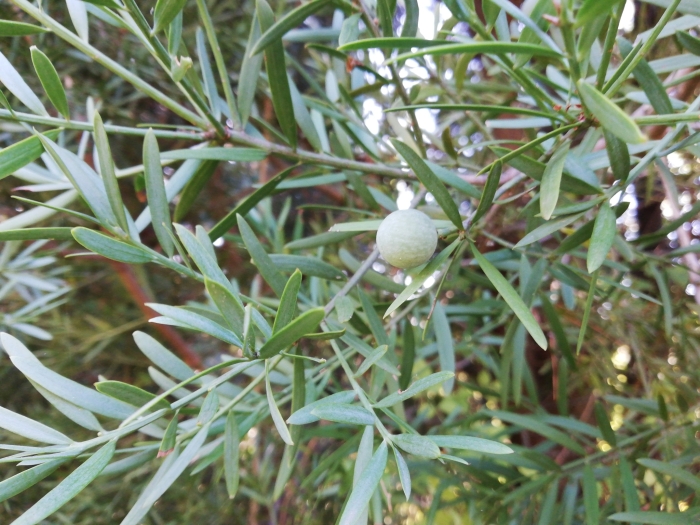Common Yellowwood
(Afrocarpus falcatus)
Common Yellowwood (Afrocarpus falcatus)
/
/

Nadine Van Zyl
CC BY 4.0
Image By:
Nadine Van Zyl
Recorded By:
Copyright:
CC BY 4.0
Copyright Notice:
Photo by: Nadine Van Zyl | License Type: CC BY 4.0 | License URL: http://creativecommons.org/licenses/by/4.0/ | Rights Holder: Nadine Van Zyl | Publisher: iNaturalist | Date Created: 2019-04-28T09:25:39-07:00 |


























































Estimated Native Range
Summary
Afrocarpus falcatus, commonly known as Common Yellowwood, is an evergreen conifer tree native to the Afromontane forests of Southern Africa, particularly South Africa, Zimbabwe, and Malawi. It is a slow-growing species that can reach an impressive height of up to 45 meters, with some specimens known to reach 60 meters in optimal conditions. In higher elevations or exposed coastal habitats, it typically grows to a more modest height of around 25 meters. The trunk diameter can be substantial, ranging from 2 to 3 meters, and the bark is a distinctive gray-brown to reddish color. This species is remarkably long-lived, with some trees surviving for over 1,000 years.
The Common Yellowwood is valued for its tall, straight form and its dense, dark green foliage, which makes it an excellent choice for large gardens, parks, and as a street tree in urban landscapes. It is also used for reforestation and conservation projects. The tree’s wood is highly prized for furniture and paneling. In cultivation, it adapts well to full sun or part shade and requires low amounts of water once established, making it relatively drought-tolerant. It prefers soils with medium to fast drainage. Gardeners should be aware that due to its potential size and longevity, adequate space is necessary for its full development.CC BY-SA 4.0
The Common Yellowwood is valued for its tall, straight form and its dense, dark green foliage, which makes it an excellent choice for large gardens, parks, and as a street tree in urban landscapes. It is also used for reforestation and conservation projects. The tree’s wood is highly prized for furniture and paneling. In cultivation, it adapts well to full sun or part shade and requires low amounts of water once established, making it relatively drought-tolerant. It prefers soils with medium to fast drainage. Gardeners should be aware that due to its potential size and longevity, adequate space is necessary for its full development.CC BY-SA 4.0
Plant Description
- Plant Type: Tree
- Height: 50-70 feet
- Width: 50-70 feet
- Growth Rate: Rapid
- Flower Color: N/A
- Flowering Season: Fall
- Leaf Retention: Evergreen
Growth Requirements
- Sun: Full Sun, Part Shade
- Water: Low
- Drainage: Medium, Fast
Common Uses
Low Maintenance, Potted Plant, Salt Tolerant
Natural Habitat
Afromontane forests
Other Names
Common Names: Bastard Yellowwood, Outeniqua Yellowwood, African Pine Tree, Weeping Yew, Yellowwood, Outeniekwageelhout, Outeniekwa-Geelhout, Gewöhnliches Agrogelbholz, Mu Sengera, Inkoba
Scientific Names: , Afrocarpus falcatus, Podocarpus falcatus, Nageia falcata, Podocarpus meyerianus, Afrocarpus gaussenii, Decussocarpus falcatus, Afrocarpus falcatus subsp. gaussenii, Afrocarpus gracillima, Nageia falcata var. gaussenii
GBIF Accepted Name: Afrocarpus falcatus (Thunb.) C.N.Page